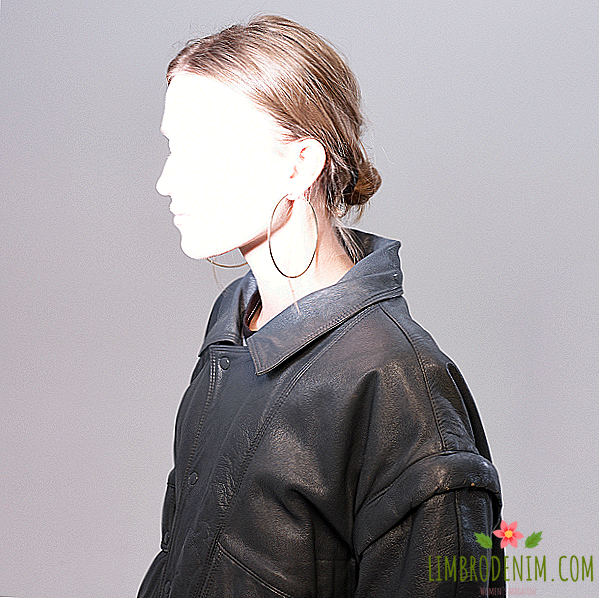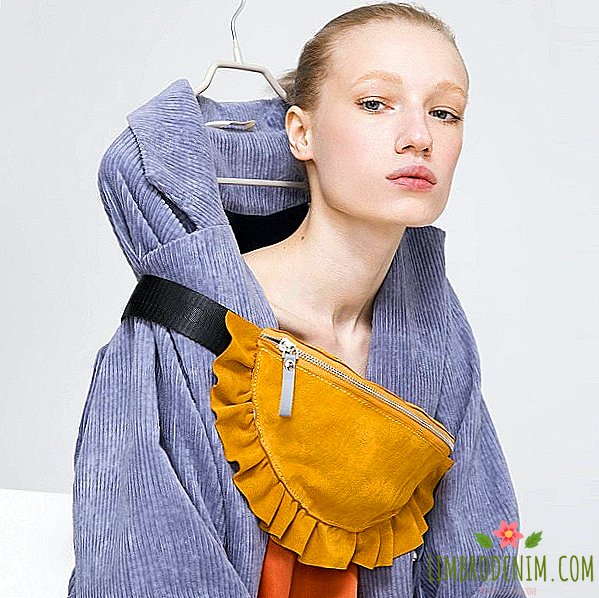A lot - not a little: What happens to the neckline
In the December issue of the British Vogue 2016, the material came out under the loud headline "What happened to the neckline?". The author, journalist Kathleen Baird-Murray, wondered why the recent push-up, the former for more than a decade almost the main female weapon in the struggle for attention and self-esteem, gradually goes into oblivion. Allegedly, more and more actresses and girls-stars are choosing chaste, deaf dresses as outfits, and on the catwalks, with the advent of so-called intellectual fashion and a course on "new comfort", a full-bodied neckline can hardly be found.
Such polemical articles give reason to think: after all, it is true, there has been a departure from the straightforward eroticization of the female body towards more complex ideological and design structures. New ideas about femininity as such, led to the fact that the very image of the exposed breast just ceased to be perceived as relevant.

Big breasts as the personification of exemplary femininity were promoted so desperately that at some point we just wanted to see something new.
Fashion for breasts changed at about the same frequency as fashion in general. Yes, and the connection of one with the other can be traced quite clearly. The history of fashion trends is always the history of attitudes towards the female body, the canonization of those or other standards of beauty and sexuality, provoked by certain movements in society. Another important factor in the accession of a certain conditional "ideal body" is the conditional role of a woman, the fulfillment of which should be subordinated to, including her appearance. An example of an hourglass silhouette figure that served as a model until the 1910s and returned to the fashion by Dior in the late 1940s comes to mind. He symbolized not only the ideal of appearance, but also translated the idea of a "female destiny" - to be an exemplary mother, able to conceive and bear offspring; wide hips and full breasts served as a fertility marker.
The fashionable young girls of the 1960s, in turn, rejected such archaisms and, trying to break away from the dogmas of behavior imposed by the older generation, among other things, honored the new “perfect body” - girlishly slender, without obvious secondary sexual characteristics. In the 1980s, with the penetration of travesty culture elements into high fashion, fetishisation of the female body again became one of the main leitmotifs, it suffices to recall the latent models in the shows of Thierry Mugler and corsetted chest in Vivienne Westwood and Jean-Paul Gautier.


In the 1990s, the asexual female image, deprived of the desire to exaggerate natural volumes, came to the fore, the style that became fashionable in the spirit of “heroin chic” and the designers’s general desire to view the female body not as a tool to attract male attention, but as a field for realization of own creative ideas - about a new role of the weak sex against the background of another wave of feminism, about erosion of gender boundaries and other socially significant things. Even Tom Ford, in his eroticism-crafted collections for Gucci, did not use fetish-on-the-forehead elements: the curvaceous models practically did not participate in his shows.
If you were fifteen or so in the mid-2000s, you can surely recall a couple of stories from that period in which a bra was bigger than your chest, cotton and a boy you really wanted to like. Well, or classmates, from whom it was no longer possible to tolerate jokes about the "minus one." To be honest, it is rather difficult to imagine something like this in 2017 - thanks to the efforts of the fashion industry and the glorified opionion leaders. At least, the focus from this part of the body is shifting more and more noticeably - the resource Mic.com even conducted a whole study that the gluteal implants in 2016 became new breast implants. Be that as it may, the fact is evident (more precisely, a little lower): an unequivocal emphasis on the chest in the form of deep cleavage and cuts finally came out of the list of fashion trends.
In part, this can be explained by banal fatigue: over the past ten years, large breasts as the personification of exemplary femininity and a mandatory attribute of beauty have been promoted so desperately that at some point we just wanted to see something new. A radical shift began in the year 2012, when everyone suddenly started talking about the “new femininity” - the one that prefers unobtrusive contextual advertising to aggressive marketing.

If Vogue says the neckline is out of fashion, what can you do with breasts that you got from nature? It is hardly possible to refuse it, as from last year's accessory. Choosing whether to emphasize the chest or not - only yours
The ideals of this very femininity come from the reluctance to carry themselves to the world as an object of desire for an ideal appearance. A “new” woman seeks to declare herself first of all as an individual and not allow anyone to admit the idea that she is dressing or caring for herself “for a man”. The volume chest as the main symbol of all obsolete ideals of beauty came under the scope of the first: in the 1960s, too, the new generation of young and progressive girls set their own standards. Too straight sexuality has ceased to be the main driving force of fashion marketing: in order to get the attention of millennials, who appreciate a non-trivial approach and original steps on the part of brands, designers have to look for more sophisticated methods. Recall the two main production makers of the modern fashion industry - Gucci and Vetements. None of these brands does not abuse the topic of sex and does not release models on dresses on the catwalk with dresses with expressive cleavage or even emphasizing breasts at all.
Tightly buttoned shirts made of fine silk, through which you can see only the outlines of sconce, turtlenecks made of fine knitwear, free-cut dresses that do not emphasize the silhouette, but leave room for imagination - there is a feeling that in modern fashion there is no room left for candid outfits. “Things that are more likely to hide rather than flaunt a figure today evoke much more interest,” says Vanessa Friedman in her column for the NY Times. And the prerequisites for this phenomenon are many: from androgyny and tendencies to hyperdimensions to the influence of Islam on the world agenda.


You can analyze it endlessly - today we have what we have. The appearance of a bare body does not have such a thrilling effect on us as a naked ankle could have caused in the XIX century: sex and eroticism became part of the routine due to pop and TV culture (hello show "Keeping Up with the Kardashians"), and therefore ceased to serve wow factor.
What to say about the neckline, besides underlined push-up, such an image does not fit into the unwritten code of “intellectual fashion”, which is cherished by both modern fashion figures and street fashion brands, which were originally exclusively male. A woman who knows her worth and does not need frivolous techniques to increase her attractiveness is fashionable; a woman who chooses sexually explicit outfits to attract male attention is old-fashioned. The only problem is that, by assigning new obsolete canons to the place, we can hardly solve the problem, again limiting ourselves to a certain set of visual codes marked with the sign “this is good”.
All of the above does not apply to fashion, cultivated by the same pop culture with Kim Kardashian at the head. Yes, over the past couple of years she got rid of Herve Leger bandage dresses and push-up bras, but the reality show star does not deny herself in dresses and tops with a neckline. Yes, and rightly so. After all, if Vogue says that the neckline is out of fashion, what can you do with breasts that you got from nature? It is hardly possible to refuse it, as from last year's accessory. The whole thing, as usual, in the flow: with the neckline or without - the main thing is that you feel comfortable. And the choice to emphasize whether your chest or not - only yours.
Photo: KM20, Wikimedia Commons, Guess, Joseph, The Row





